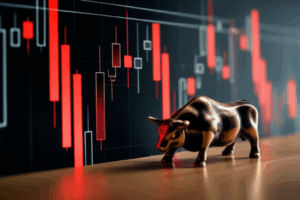THINK Ahead: The Tariff Hokey Cokey
In the intricate ballet of global trade, a peculiar dance has become increasingly prominent: “The Tariff Hokey Cokey.” This isn’t a whimsical folk jig but a metaphor for the erratic, often unpredictable imposition and removal of tariffs that shapes international commerce and, by extension, our economic futures. For young adults navigating the complexities of finance and investment, understanding this ongoing policy shuffle is not just academic; it’s essential for making informed decisions and anticipating the next twist in the global economic rhythm.
Tariffs, essentially taxes on imported goods or services, have historically been deployed as protective measures, intended to shield domestic industries, correct trade imbalances, or generate revenue. Yet, the past decade has witnessed a significant resurgence of their use, not just as economic tools but as geopolitical instruments. The most prominent example remains the US-China trade tensions, which saw waves of tariffs imposed on billions of dollars’ worth of goods, followed by periods of negotiation and partial rollbacks, only for new strategic tariffs to emerge on critical technologies or industries. This on-again, off-again, “put your whole self in, put your whole self out” approach has created a pervasive atmosphere of uncertainty, challenging the once-stable paradigms of globalization. Beyond the US and China, the European Union has also employed tariffs in response to trade disputes or as part of its climate agenda, such as the proposed Carbon Border Adjustment Mechanism (CBAM), adding further layers to this complex dance.
The economic implications of this “Tariff Hokey Cokey” are far-reaching and directly impact everything from the cost of your electronics to the stability of global supply chains. For businesses, the unpredictability of tariff regimes complicates long-term planning, investment in new production facilities, and sourcing strategies. Many multinational corporations have been forced to re-evaluate their supply chains, leading to trends like “reshoring” (bringing production back home), “nearshoring” (moving production to nearby countries), or “friend-shoring” (sourcing from geopolitically aligned nations). While these shifts can foster domestic resilience and create new jobs in some sectors, they often come with increased production costs due to higher labor expenses or less efficient logistics. These elevated costs are, more often than not, passed on to consumers in the form of higher prices, contributing to inflationary pressures that erode purchasing power. Moreover, prolonged tariff disputes can stifle innovation by limiting access to specialized components or technologies and can reduce overall global trade volumes, slowing economic growth. The constant policy pivots also deter foreign direct investment, as investors shy away from markets where the rules of engagement are subject to frequent, arbitrary changes.
So, how does one “THINK Ahead” in an era dominated by the “Tariff Hokey Cokey”? For young adults keen on understanding and influencing their financial trajectory, the answer lies in cultivating adaptability and a robust analytical mindset. Firstly, remain informed about geopolitical developments and trade policy shifts. News from major economic blocs and key trading partners provides crucial signals about potential future tariff actions. Secondly, consider the impact on different sectors and asset classes when making investment decisions. Industries reliant on global supply chains or export markets may face greater volatility, while sectors focused on domestic consumption or services might offer more stability. Diversification across geographies and industries becomes even more critical. Thirdly, understand the trickle-down effect on everyday life: why certain goods might become more expensive, or why some job markets might shift. The future of trade policy is unlikely to settle into a predictable rhythm anytime soon. Instead, the “Tariff Hokey Cokey” will likely continue, driven by evolving geopolitical rivalries, national security priorities, and the race for technological supremacy. Proactive thinking, continuous learning, and a willingness to adapt will be your most valuable assets in navigating this ever-changing economic landscape.





